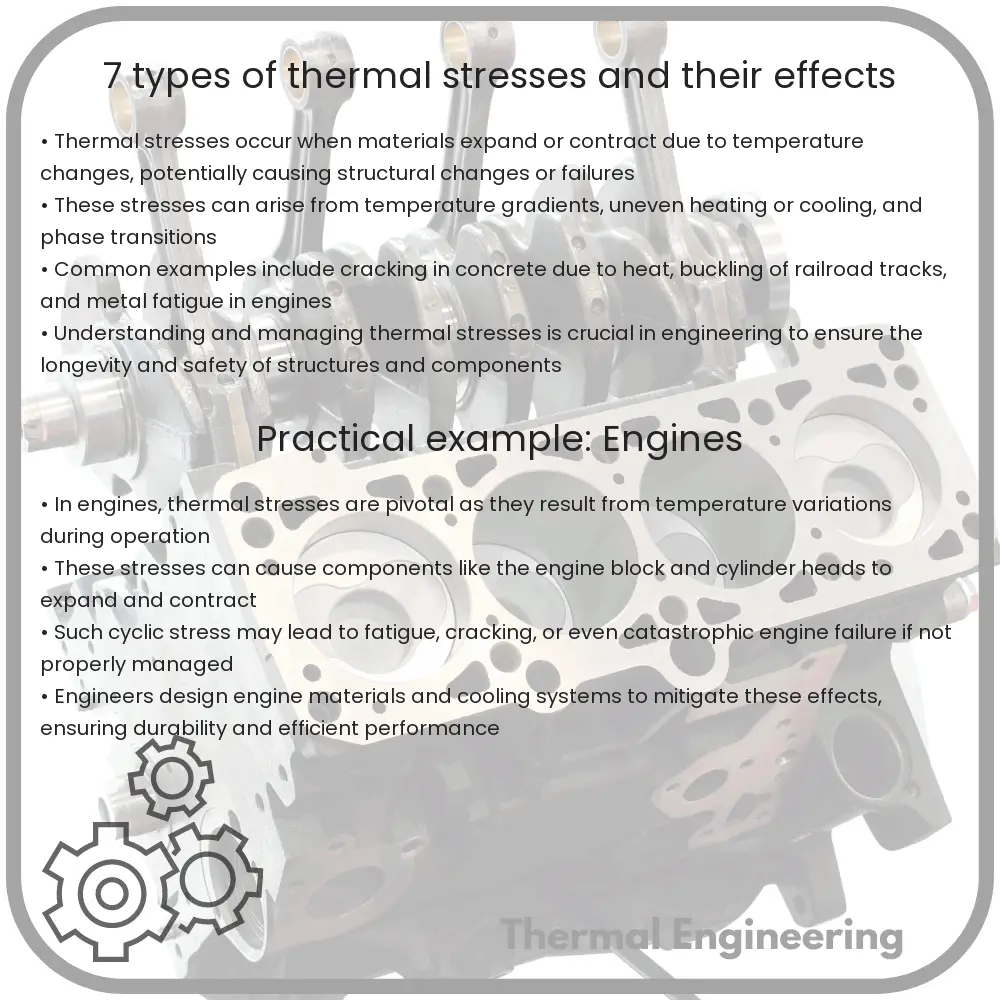Learn about thermal stresses, their types, and their impacts on materials and structures due to temperature changes.

Understanding Thermal Stresses: Types and Effects
Thermal stress occurs in materials when temperature changes lead to expansion or contraction, which in turn causes stress due to the restraint provided by the surrounding environment or the material’s own constraints. Different materials have unique responses to temperature changes, influenced by their thermal expansion coefficients, structural constraints, and environmental conditions. This article explores seven key types of thermal stresses and discusses the impacts they can have on materials and structures.
1. Uniform Thermal Expansion or Contraction
Uniform thermal expansion or contraction occurs when a material heats or cools uniformly, causing it to change size uniformly. If the material is unrestrained, this typically does not cause stress. However, if the material is partly or fully constrained, stress can develop because part of the structure wants to expand or contract but is held back by supports or other parts of the structure.
2. Differential Thermal Expansion
Differential thermal expansion happens when different parts of a material or different connected materials heat or cool at different rates. This is particularly common in composite materials or in structures composed of different materials, each with distinct thermal expansion coefficients. Stresses develop due to the mismatch in expansion or contraction rates, potentially leading to warping, buckling, or even cracking.
3. Thermal Shock
Thermal shock results when a material experiences a sudden change in temperature. Rapid heating or cooling leads to abrupt expansions or contractions that the material can’t uniformly distribute across its volume or structure quickly enough. This sudden, uneven change can create severe localized stresses, leading to failures like cracking, especially in brittle materials.
4. Thermal Cyclic Stress
Thermal cyclic stress is caused by repeated and variating cycles of heating and cooling. Each cycle induces expansion and contraction, and the repeated nature of these cycles can lead to material fatigue. Over time, this stress can weaken the material, causing cracks to form and propagate, ultimately leading to structural failure.
5. Gradient Thermal Stress
Gradient thermal stress occurs when there are temperature gradients within the material. Heated surfaces expand while cooler interior regions of the material may not expand as much or as quickly, leading to stress across the material. This type of stress is a common concern in electronic components and other high-heat applications.
6. Thermal Strain Due to External Constraints
This type of thermal stress arises when external constraints (such as supports or foundations) prevent a structure from expanding or contracting freely as the temperature changes. Even a uniform temperature change can induce stress when movement is restricted by these external forces.
7. Phase Change Induced Stresses
Some materials undergo phase changes at certain temperatures (like water freezing or melting), which can significantly change their volume. If these changes occur while the material is confined or under external pressures, the volume change can induce considerable thermal stresses. This is commonly seen in pipelines with fluids that freeze or in structures exposed to fluctuating temperatures that cross the phase change threshold.
Conclusion
Recognizing and understanding these types of thermal stresses is critical in the design and material selection process for engineering applications. Effective management of thermal stresses can lead to safer, more reliable, and longer-lasting products and structures. Engineers often employ various mitigation strategies, including choosing materials with compatible thermal expansion properties, designing to accommodate expected temperature changes, and using thermal barriers or insulation to manage temperature extremes.